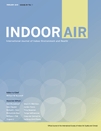Microbes around the house Editorial: An emerging paradox: Toward a better understanding of the potential benefits and adversity of microbe exposures in the indoor environment – J. Mensah-Attipoe – Indoor Air (OA) In order to further explore indoor microbial exposures and their associated health effects, and to help establish research agenda priorities, a two-day workshop to …
Well this certainly seems of interest to the microBEnet audience Ann Med. 2015 Apr 23:1-8. Helsinki alert of biodiversity and health. Alas the paper is an absurd $52 to access for 24 hours. So all I have is the abstract, which certainly seems interesting: Urban living in built environments, combined with the use of processed water …
A just-published article by Desroches et al, “Extrolites of Wallemia sebi, a very common fungus in the built environment,”in the journal Indoor Air describes a previously unidentified metabolite of Wallemia sebi , a very common fungus in houses worldwide, although relatively more common in north temperate climates. The authors (including David Miller) write that it …
A story on the May 6th NPR program, Morning Edition, “Parents’ Saliva On Pacifiers Could Ward Off Baby’s Allergies” features a focus on the human microbiome, partental behavior and babies’ allergies. “That word “microbiome” – describing the collection of bacteria that live in and on our bodies – keeps popping up. This time, researchers say …
There is a new paper in the New England Journal of Medicine that looks to be of relevance to those interested in built environment microbiology. Unfortunately the paper is not freely available and I do not have access to it right now. But there is a summary available (from the authors/journal):
